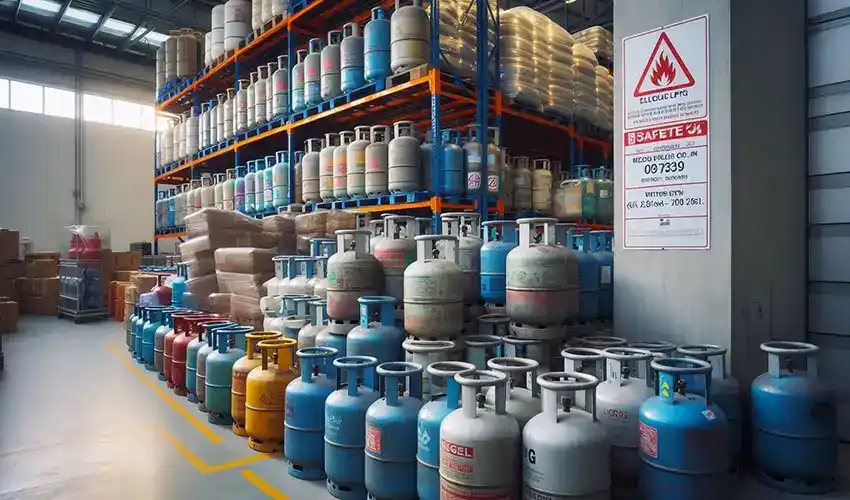A Comprehensive Look at the Production of LPG
Liquefied Petroleum Gas (LPG), as one of the key energy sources, plays a crucial role in meeting domestic, industrial, and commercial needs. The production process of this gas, from extracting primary resources to separation, liquefaction, and precise blending of propane and butane, requires advanced technologies and the management of technical and environmental challenges. This article examines the production process of LPG, the differences in its production processes from natural gas, crude oil, and gas condensates, the importance of the blending process, and the challenges associated with the storage and transportation of LPG.
Main Sources of LPG Production
The primary sources of LPG production include natural gas, crude oil, and gas condensates, with the production process varying depending on the source. Natural gas, as the main source, contains significant amounts of heavier hydrocarbons such as propane and butane, which are extracted through separation and liquefaction processes. Propane and butane can also be obtained as by-products of the refining and distillation of crude oil. Additionally, gas condensates extracted from natural gas reservoirs are another rich source for LPG production due to their high concentration of propane and butane. These diverse sources form the foundation for LPG supply, which is widely used in domestic, industrial, and commercial applications.
The Production Process of Propane and Butane
LPG is composed of butane and propane, so understanding the production of LPG requires knowledge of how propane and butane are obtained:
Natural Gas
The extraction of natural gas involves recovering gas from underground gas fields or as “associated gas” with crude oil. This process includes drilling gas wells to access underground reservoirs containing gas. The extracted gas typically contains a mixture of various hydrocarbons (such as methane, ethane, propane, and butane) along with impurities like sulfur, carbon dioxide, and water. After extraction, the natural gas is transported to processing units where impurities are removed, and lighter hydrocarbons like propane and butane are separated.
The processing of natural gas then begins, aiming to separate useful components from impurities and prepare the gas for transportation and consumption. At this stage, natural gas is transferred via pipelines to processing units. Initially, impurities such as water, carbon dioxide, sulfur, and solids are removed from the gas. Next, heavier hydrocarbons like propane, butane, and pentane are separated from methane and ethane through processes such as cryogenic distillation and compression. These hydrocarbons are stored as raw materials for producing liquefied petroleum gas (LPG).
Crude Oil
In crude oil refining, propane and butane can be obtained in two ways. First, the extracted crude oil is fed into an atmospheric distillation column and heated, separating it into various components. Due to their lighter nature, propane and butane are separated from the top of the distillation column. Additionally, heavier fractions of crude oil can also be used as raw materials for LPG production. This is achieved through processes such as thermal or catalytic cracking and vacuum distillation, which break down larger hydrocarbon molecules into lighter ones like propane and butane. Finally, these gases are separated from other compounds and purified to be ready for LPG production.
Blending Process
Blending is one of the key stages in the production of liquefied petroleum gas (LPG), where a specific ratio of propane and butane is mixed to achieve the desired physical and chemical properties for various applications. This process plays a crucial role in LPG production, as the propane-to-butane ratio directly affects the vapor pressure, boiling point, and performance of LPG under different climatic conditions.
For instance, in colder regions, the proportion of propane is increased to ensure usability at lower temperatures, while in warmer regions, more butane is used. Blending also ensures that the produced LPG complies with various market standards (domestic, industrial, or automotive fuel uses) and maintains consistent product quality. Therefore, this process enhances the flexibility and efficiency of LPG to meet the diverse needs of consumers.
Challenges in LPG Production
As mentioned, various methods exist for LPG production, all of which require advanced equipment and modern technologies. Steps such as distillation, cracking, and liquefaction demand substantial investments in infrastructure and energy. In addition to technical and economic challenges, LPG production also involves environmental concerns, including greenhouse gas emissions and potential risks from leaks or improper storage. These issues necessitate precise management and strict adherence to environmental standards.
Another significant challenge in LPG production relates to storage in specialized tanks and the transportation of this product. LPG transportation companies require specialized and standard-compliant tankers, whose design and operation demand a high degree of precision. Additionally, ensuring safety in transporting LPG is of critical importance. These technical and safety requirements make the storage and transportation of LPG a complex and sensitive process, representing one of the primary challenges in managing this product.
A proper understanding of LPG production and the management of these challenges not only improves efficiency and reduces costs but also contributes to maintaining safety and environmental sustainability. Attention to these factors paves the way for the optimal use of LPG as a clean and efficient energy source.

